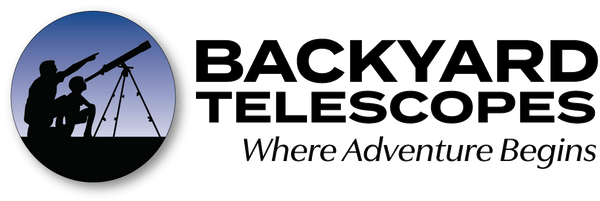After using refractor telescope for some time, they are a fantastic option for novice astronomers. We have comprised a list of the top 3 things to look for when purchasing your first refractor.
Refractor Telescope - Typical Telescope Design
When we visualize a “telescope”, the image of a refractor telescope, or refractor, is what we picture. Refractor telescopes are optical telescopes that use lenses to “refract” light. This is done by bringing the light from the aperture to a focal point to the eyepiece at the end of the telescope’s tube.
Below are the 3 things you need to know when buying a refractor telescope:
1. Aperture
One of the main components to consider for in refractor telescope is its aperture. The aperture is the main optical lens of a refractor. The refractor lens determines the scope’s light gathering ability as well as it’s resolving power. Basically, the aperture size is one factor that determines how vivid and sharp an image will be.
Bigger Is Not Always Better
Please note, bigger is not always better. Yes, the larger the aperture the brighter and sharper an image can be, but that comes with a price. The larger the aperture the bigger the telescope and the heavier and bulker it becomes. These are factors when considering a new refractor telescope.
Generally, for first time telescopes owners we recommend a 60mm refractor telescope and 70mm refractor telescope. These are two of the most popular size telescopes and they are a perfect entry level telescope.
2. Magnification
When it comes to magnification, telescope lens magnification can provide a wide range of options. This all depends on the eyepiece. However, high magnification doesn’t necessarily produce high quality images. As with anything, this is only a small factor, because it again depends on aperture size as well as atmospheric conditions. We want to aim for an average telescope magnification.
Your refractor telescope’s aperture can only produce so much image, so you must find the best possible range of magnification in order to see the detail of what you are viewing.
How Much Is Too Much Magnification for a Refractor?
You might be asking yourself, “How much power is too much magnification?” A good guide is “50 times your telescope's aperture in inches” or “twice its aperture in millimeters”. Either of these equations would be your telescope’s highest recommended magnification.
If you plan to purchase a 60mm refractor telescope, the highest magnification you should consider would be 120x. However, we recommend an average telescope magnification between 8x and 40x. 8x is great for a larger field of view for deep sky objects and the higher 40x magnifications work better for viewing the moon and other near-earth objects.
3. Eyepieces
With a quick lesson on magnification complete, we now look at what the recommended eyepiece for your refractor telescope. Eyepieces determine the magnification and field of view of a telescope. They have a semi complex calculation as well that uses the “focal length” of your telescope to get a “focal ratio”.
The focal length is the distance from your aperture to your eyepiece. The focal ratio can be found by dividing the focal length of the telescope by the aperture. For example, a 70mm aperture with a focal length of 700mm would have an equation of 700mm/70mm = 10mm so the focal ratio is written as “f/10” for this example. Focal ratios for most telescopes on the market range from f/4 to f/15.
The focal ratio helps when choosing your refractor telescope’s eyepieces. Eyepieces also have focal lengths so to get the recommended eyepiece power we would use an eyepiece that has a focal length in mm that is roughly half the focal ratio.
What We Recommend
This can be a little confusing and a bit more complex, so we don’t want to get too technical! For amateurs using a beginner refractor telescope we recommend a 1.25” or 2” diameter eyepiece. If you are planning to view planets, a short 5-10mm eyepiece works best and 20-30mm eyepieces work best for viewing deep space objects.
Now you know the top 3 things to look for in a refractor telescope. The wonders of the night sky is ready to be explored!

